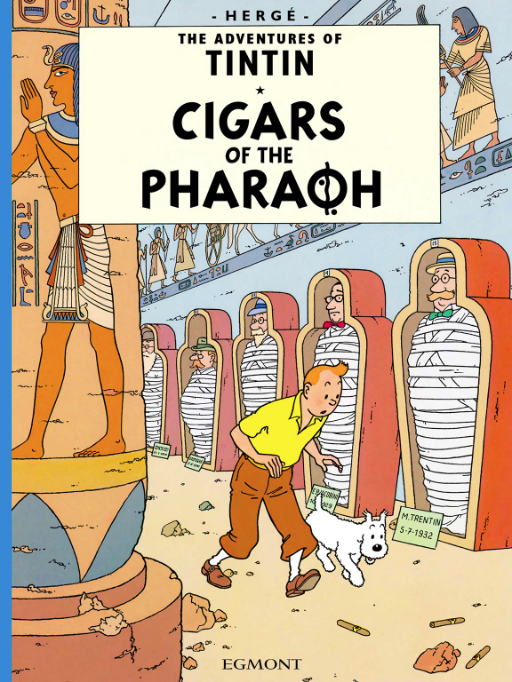

With a relatively smooth continuity between Cigars of the Pharaoh and The Blue Lotus Hergé gives his readers their first glimpse of what later became the classic Tintin ‘double-bill’ format.
In COTP which, like the later adventure The Crab With The Golden Claws, is basically a drug smuggling yarn, Hergé introduces the smoothly plausible but deviously villainous movie-mogul Rastapopolous, who will return in several future Tintin adventures, including, naturally enough, the Blue Lotus, it following on from COTP as it does.
COTP’s Dr/Prof, Sophocles Sarcophagus, is a kind of experimental forerunner of Cuthbert Calculus, particularly in his absent-mindedness and mis-hearing or misapprehending things. Like Shooting Star’s Decimus Phostle and (prof/doc?) Alembick (KOS), Sarcophagus allows Hergé to experiment with the ‘mad professor’ type. In this instance the scientist does become literally mad, and is left that way, whereas Calculus is just ‘dotty’, absorbed in his own world of experiment and inquiry, and not at all lunatic. We are also introduced to Thomson and Thompson for the first time.
Hergé’s craft is clearly developing, inasmuch as these two adventures are better plotted, drawn and generally realsed than either Congo or America. But his skills are evolving, and this work, whilst very enjoyable, is not yet on a par with his best (the next three double-bills, Calculus, Tibet or Flight 714). Although substantially reworked, as was much of his early work, traces of Hergé’s earlier ‘long-body’ style remain apparent, and at this point contextual/background detail is more cursory on the whole than in later adventures.
Having said all this, it’s still long on good old-fashioned fun.
